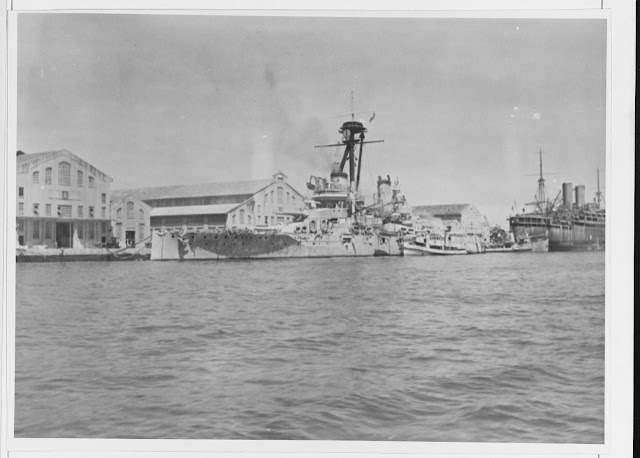 |
| Brazilian Battleship Sao Paulo Circa 1942 |
São Paulo was a dreadnought battleship designed and built by the British companies Armstrong Whitworth and Vickers, respectively, for the Brazilian Navy. It was the second of two ships in the Minas Geraes class and was named after the state and city of São Paulo.
São Paulo was launched on 19 April 1909 and commissioned on 12 July 1910. Soon after, it was involved in the Revolt of the Lash (Revolta de Chibata), in which crews on four Brazilian warships mutinied over poor pay and harsh punishments for even minor offences. After entering the First World War, Brazil offered to send São Paulo and its sister Minas Geraes to Britain for service with the Grand Fleet, but Britain declined since both vessels were in poor condition and lacked the latest fire control technology. In June 1918, Brazil sent São Paulo to the United States for a full refit that was not completed until 7 January 1920, well after the war had ended. On 6 July 1922, São Paulo fired its guns in anger for the first time when it attacked a fort that had been taken during the Tenente revolts. Two years later, mutineers took control of the ship and sailed it to Montevideo in Uruguay, where they obtained asylum.
In the 1930s, São Paulo was passed over for modernization due to its poor condition—it could only reach a top speed of 10 knots (19 km/h; 12 mph), less than half its design speed. For the rest of its career, the ship was reduced to a reserve coastal defence role. When Brazil entered the Second World War, São Paulo sailed to Recife and remained there as the port's main defence for the duration of the war. Stricken in 1947, the dreadnought remained as a training vessel until 1951, when it was taken under tow to be scrapped in the United Kingdom. The tow lines broke during a strong gale on 6 November, when the ships were 150 nmi (280 km; 170 mi) north of the Azores, and São Paulo was lost.


No comments:
Post a Comment